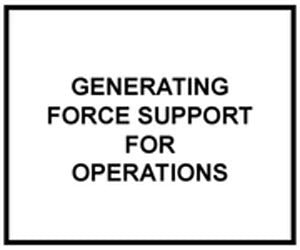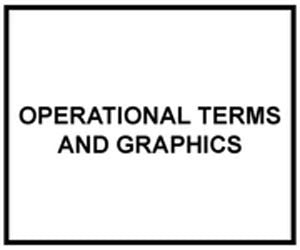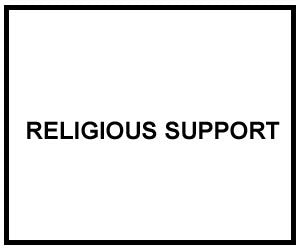
FM 3-0: OPERATIONS
Official US Army Field Manual in Acrobat PDF file format.
FM 3-0 is one of the Army’s two capstone doctrinal publications; the other is FM 1, The Army. FM 3-0 presents overarching doctrinal guidance and direction for conducting operations. The eight chapters that make up this edition of Operations constitute the Army’s view of how it conducts prompt and sustained operations on land and sets the foundation for developing the other fundamentals and tactics, techniques, and procedures detailed in subordinate field manuals. FM 3-0 also provides operational guidance for commanders and trainers at all echelons and forms the foundation for Army Education System curricula:
* Chapter 1 establishes the context of land operations in terms of a global environment of persistent conflict, the operational environment, and unified action. It discusses the Army’s expeditionary and campaign capabilities while emphasizing that it is Soldiers and leaders who remain the Army’s most important advantage.
* Chapter 2 describes a spectrum of conflict extending from stable peace to general war. From that spectrum, it establishes five operational themes into which various joint operations fit. This chapter helps Army leaders to understand and differentiate between the requirements of diverse joint operations such as peacekeeping and counterinsurgency. It shapes supporting doctrine for each operational theme.
* Chapter 3 is the most important chapter in the book; it describes the Army’s operational concept— full spectrum operations. Full spectrum operations seize, retain, and exploit the initiative and achieve decisive results through combinations of four elements: offense, defense, and stability or civil support operations. It establishes mission command as the preferred method of exercising battle command.
* Chapter 4 addresses combat power, the means by which Army forces conduct full spectrum operations. It replaces the older battlefield operating systems (“BOS”) with six warfighting functions, bound by leadership and employing information as the elements of combat power. Combined arms and mutual support are the payoff.
* Chapter 5 reviews the principles of command and control and how they affect the operations process—plan, prepare, execute, and assess. The emphasis is on commanders and the central role that they have in battle command. Commanders understand, visualize, describe, direct, lead, and continually assess.
* Chapter 6 discusses operational art, offering Army commanders a bridge between military theory and practice.
* Chapter 7 is about information superiority, particularly the five Army information tasks, purpose, and staff responsibility.
* Chapter 8 discusses the requirement for Army forces in joint campaigns conducted across intercontinental distances. It frames the challenges created by the requirement for Army forces in terms of strategic and operational reach.
Four appendixes complement the body of the manual. The principles of war and operations are in appendix A. Command and support relationships are in appendix B. A brief description of modular force is in appendix C. And a discussion of the purpose of doctrine in the Army is in appendix D. This appendix includes a chapter-by-chapter summary of the important changes made in this edition of FM 3-0. It also includes
tables listing new, modified, and rescinded terms for which this manual is the proponent.
Army doctrine is consistent and compatible with joint doctrine. FM 3-0 links landpower doctrine to joint operations doctrine as expressed in joint doctrinal publications, specifically, JP 3-0, Doctrine for Joint Operations. FM 3-0 also uses text and concepts developed with North Atlantic Treaty Organization partners. When published, Allied Joint Publication 3.2, Doctrine for Land Operations, will contain this material.
The principal audience for FM 3-0 is the middle and senior leadership of the Army, officers in the rank of major and above who command Army forces in major operations and campaigns or serve on the staffs that support those commanders. It is also applicable to the civilian leadership of the Army.
File download size: 6 MB



